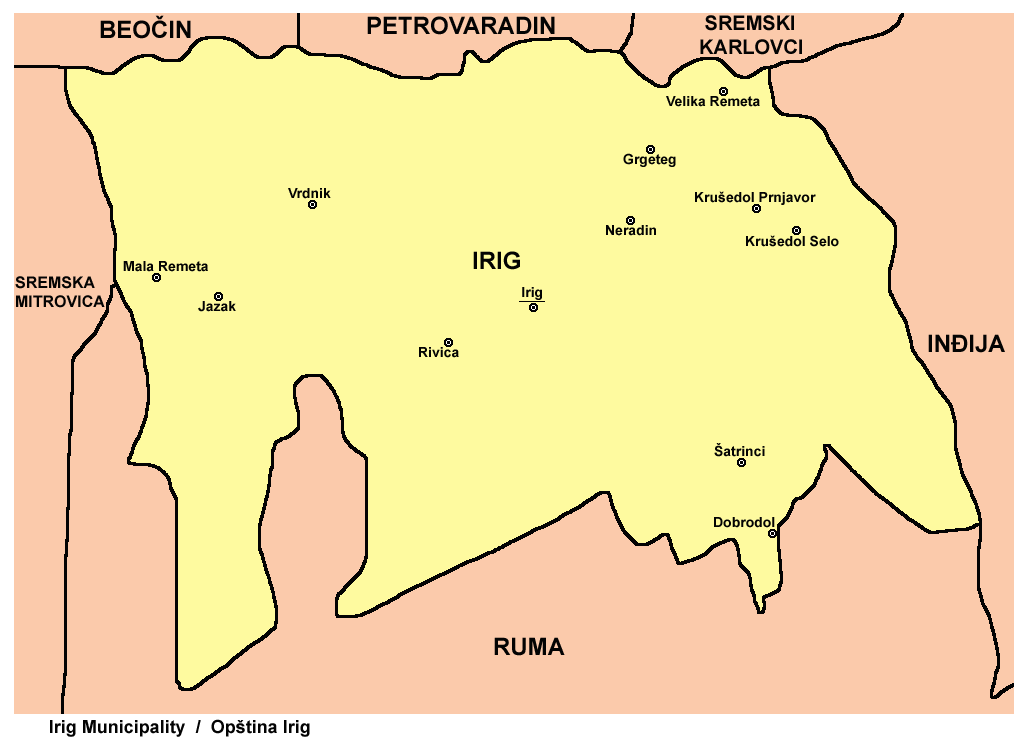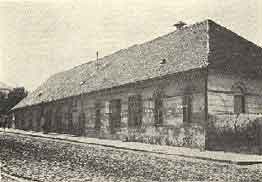|
Petar Matić Dule
Petar Matić Dule (6 July 1920 – 4 October 2024) was a Yugoslav Partisan World War II veteran, colonel general of the Yugoslav People's Army (JNA), politician, socio-political worker, and the last living People's Hero of Yugoslavia. Biography Matić was born in Irig, Serbia on 6 July 1920. He came from a wealthy farming family. Matić finished primary school in his hometown and until the beginning of the Second World War was engaged in agriculture. Socializing with young workers and students, he became acquainted with the ideas of the labor movement and in June 1940 became a member of the Communist Party of Yugoslavia (CPY). After the April War and the occupation of the Kingdom of Yugoslavia in 1941, Matić, as secretary of the Local Committee, and then secretary of the CPY District Committee for Irig and a member of the Uprising Preparation Staff, worked very actively to organize the Srem uprising in August 1941, he was in charge of receiving communist prisoners who had esc ... [...More Info...] [...Related Items...] OR: [Wikipedia] [Google] [Baidu] |
Irig, Serbia
Irig (, ; ) is a town and municipality located in the Srem District of the autonomous province of Vojvodina, Serbia. The town has a population of 4,415, while Irig municipality has 10,866 inhabitants. Name In Serbian, the town is known as ''Irig'' (Ириг), in Croatian as ''Irig'', in Hungarian as ''Ireg'' or ''Ürög'', in German as ''Irick'', in Slovak as ''Irig'', and in Rusyn as Ириґ. History Irig was first mentioned in the historical documents in 1225. In the 15th century, the masters of the town were Serbian despots Vuk Grgurević, Đorđe Branković, and Jovan Branković. During the 15th and 16th century, ten Orthodox monasteries were built in the surrounding of Irig (Two of those were located just near the town). Between 1526 and 1699, the town was under Ottoman administration. During this time, it belonged to the Sanjak of Syrmia, and was the administrative seat of one of the seven nahijas in that sanjak. In 1665, the town had 2,000 houses, one mosque an ... [...More Info...] [...Related Items...] OR: [Wikipedia] [Google] [Baidu] |
Bosnia
Bosnia and Herzegovina, sometimes known as Bosnia-Herzegovina and informally as Bosnia, is a country in Southeast Europe. Situated on the Balkans, Balkan Peninsula, it borders Serbia to the east, Montenegro to the southeast, and Croatia to the north and southwest, with a coast on the Adriatic Sea in the south. Bosnia (region), Bosnia has a moderate continental climate with hot summers and cold, snowy winters. Its geography is largely mountainous, particularly in the central and eastern regions, which are dominated by the Dinaric Alps. Herzegovina, the smaller, southern region, has a Mediterranean climate and is mostly mountainous. Sarajevo is the capital and the largest city. The area has been inhabited since at least the Upper Paleolithic, with permanent human settlement traced to the Neolithic cultures of Butmir culture, Butmir, Kakanj culture, Kakanj, and Vučedol culture, Vučedol. After the arrival of the first Proto-Indo-Europeans, Indo-Europeans, the area was populated ... [...More Info...] [...Related Items...] OR: [Wikipedia] [Google] [Baidu] |
Assembly Of Serbia
The National Assembly ( sr-Cyrl-Latn, Народна скупштина, Narodna skupština, ), fully the National Assembly of the Republic of Serbia (), is the Unicameralism, unicameral legislature of Serbia. The assembly is composed of 250 Deputy (legislator), deputies who are Proportional representation, proportionally elected to four-year terms by secret ballot. The assembly elects a President of the National Assembly of Serbia, president (speaker) who presides over the sessions.wikisource:Constitution of Serbia#1. National Assembly, Wikisource: Constitution of Serbia The National Assembly exercises supreme legislative power. It adopts and amends the Constitution of Serbia, Constitution, elects Government of Serbia, Government, appoints the Governor of the National Bank of Serbia and other state officials. All decisions are made by majority vote of deputies at the session at which a majority of deputies are present, except for amending the Constitution, when a two-thirds maj ... [...More Info...] [...Related Items...] OR: [Wikipedia] [Google] [Baidu] |
Central Committee Of The 8th Congress Of The League Of Communists Of Yugoslavia
This electoral term of the Central Committee was elected by the 8th Congress of the League of Communists of Yugoslavia, 8th Congress of the League of Communists of Yugoslavia in 1964, and was in session until the convocation of the 9th Congress of the League of Communists of Yugoslavia, 9th Congress in 1969. That congress opted to abolish the Central Committee and replace it with the Conference of the League of Communists of Yugoslavia, which existed until 1974 when the 10th Congress of the League of Communists of Yugoslavia, 10th Congress Central Committee of the 10th Congress of the League of Communists of Yugoslavia, re-established the Central Committee. Convocations Composition Notes Bibliography Books * * * * * * * * * * * * * * Journals * {{League of Communists of Yugoslavia, central Central Committee of the 8th Congress of the League of Communists of Yugoslavia ... [...More Info...] [...Related Items...] OR: [Wikipedia] [Google] [Baidu] |
Lieutenant General
Lieutenant general (Lt Gen, LTG and similar) is a military rank used in many countries. The rank traces its origins to the Middle Ages, where the title of lieutenant general was held by the second-in-command on the battlefield, who was normally subordinate to a captain general. In modern armies, lieutenant general normally ranks immediately below general (or colonel general) and above major general; it is equivalent to the navy rank of vice admiral, and in air forces with a separate rank structure, it is equivalent to air marshal. In the United States, a lieutenant general has a three star insignia and commands an army corps, typically made up of three army divisions, and consisting of around 60,000 to 70,000 soldiers. The seeming incongruity that a lieutenant general outranks a major general (whereas a major outranks a lieutenant) is due to the derivation of major general from sergeant major general, which was a rank subordinate to lieutenant general (as a lieutenan ... [...More Info...] [...Related Items...] OR: [Wikipedia] [Google] [Baidu] |
Central Committee Of The League Of Communists Of Yugoslavia
The Central Committee was the highest organ of the League of Communists of Yugoslavia (LCY), the ruling party of the Socialist Federal Republic of Yugoslavia, between two congresses, which it was elected by and reported to. An exception to this rule occurred at the LCY 9th Congress in 1969 when the Central Committee was replaced with the Conference, which lasted until the reestablishemtn of the central committee at the 10th LCY Congress in 1974. The central committee oversaw the work of the LCY as a whole and ensured that the guidelines and assignments adopted by the LCY Congress were complied with. It could set policy and formulate a political platform within the parameters set by the last convened party congress. All central committee members were of equal standing, including the presidency members. Specifically, the LCY Central Committee had the right to elect and remove members of its political-executive organ, the LCY Presidency, which led the LCY when the central commit ... [...More Info...] [...Related Items...] OR: [Wikipedia] [Google] [Baidu] |
Ministry Of Defence (Yugoslavia)
, native_name_a = , native_name_r = , type = Ministry , seal = Standard of the Minister of Defense of Serbia and Montenegro.svg , seal_width = , seal_caption = Standard of the Minister of Defence , logo = , logo_width = , logo_caption = , image = Serb-milit-bomb-nato.jpg , image_size = , image_caption = The Yugoslav Ministry of Defence building, damaged by a NATO bomb during the Kosovo War. , formed = , preceding1 = , preceding2 = , dissolved = , superseding1 = , superseding2 = , jurisdiction = Yugoslavia, Serbia and Montenegro , headquarters = Ministry of Defence Building, Belgrade , coordinates = , motto = , employees = , budget = , minister1_name = General Mihailo Rašić , ... [...More Info...] [...Related Items...] OR: [Wikipedia] [Google] [Baidu] |
4th Division (Yugoslav Partisans)
The 4th Krajina Division (Serbo-Croatian Latin: ''Četvrta krajiška divizija'') was a Yugoslav Partisan division formed in Glamočko polje on 9 November 1942. On the day of formation it consisted of 4,371 soldiers in three brigades: 2nd Krajina Brigade, 5th Krajina Brigade and 6th Krajina Brigade. Commander of the division was Josip Mažar Šoša, while its political commissar was Milinko Kušić. During the war it mostly operated in western and central Bosnia. It was a part of 1st Bosnian Corps The 3rd Corps ( sh-Latn, treći korpus) was a Yugoslav Partisan corps that fought against the Germans, Independent State of Croatia (NDH) and Chetniks in occupied Democratic Federal Yugoslavia during World War II. It was created in November 1942 ... until 11 May 1943 when it became part of 2nd Bosnian Corps. References {{WWII-stub Divisions of the Yugoslav Partisans Military units and formations established in 1942 History of Bosanska Krajina Bosnia and Herzegovina in World W ... [...More Info...] [...Related Items...] OR: [Wikipedia] [Google] [Baidu] |
51st Division (Yugoslav Partisans)
{{mil-unit-dis ...
In military terms, 51st Division or 51st Infantry Division may refer to: ; Infantry divisions * 51st Division (1st Formation)(People's Republic of China), 1949–1952 * 51st Reserve Division (German Empire) * 51st Infantry Division Siena (Kingdom of Italy) * 51st Division (Imperial Japanese Army) * 51st Division (Philippines) * 51st Guards Rifle Division * 51st Rifle Division (Soviet Union) * 51st (Highland) Division (United Kingdom) * 51st Infantry Division (United States) The 51st Infantry Division was an infantry division of the United States Army, composed of units from the Florida National Guard and the South Carolina National Guard. History Original Organization Date: 11 September 1946 with headquarters a ... [...More Info...] [...Related Items...] OR: [Wikipedia] [Google] [Baidu] |
Military Academy Of The General Staff Of The Armed Forces Of Russia
The Military Academy of the General Staff of the Armed Forces of the Russian Federation () is the senior staff college of the Russian Armed Forces. The academy is located in Moscow, on 14 Kholzunova Lane. It was founded in 1936 as a Soviet institution, based on higher command courses that had been established at the M. V. Frunze Military Academy, itself founded in 1918. An General Staff Academy (Imperial Russia), earlier General Staff Academy had existed during the Imperial Russia, Imperial period, since 1832. Students were, and probably still are, admitted to the Academy in the Military rank, ranks of lieutenant colonel, colonel, and General-Major (one star). Most were colonels or newly promoted generals. Officers enter in their late 30s, as a general rule. Officers selected for this academy would have first attended the appropriate service or branch academy (see Military academies in Russia). Graduates who were not already generals or admirals usually were promoted to this ran ... [...More Info...] [...Related Items...] OR: [Wikipedia] [Google] [Baidu] |
Soviet Union
The Union of Soviet Socialist Republics. (USSR), commonly known as the Soviet Union, was a List of former transcontinental countries#Since 1700, transcontinental country that spanned much of Eurasia from 1922 until Dissolution of the Soviet Union, it dissolved in 1991. During its existence, it was the list of countries and dependencies by area, largest country by area, extending across Time in Russia, eleven time zones and sharing Geography of the Soviet Union#Borders and neighbors, borders with twelve countries, and the List of countries and dependencies by population, third-most populous country. An overall successor to the Russian Empire, it was nominally organized as a federal union of Republics of the Soviet Union, national republics, the largest and most populous of which was the Russian SFSR. In practice, Government of the Soviet Union, its government and Economy of the Soviet Union, economy were Soviet-type economic planning, highly centralized. As a one-party state go ... [...More Info...] [...Related Items...] OR: [Wikipedia] [Google] [Baidu] |


